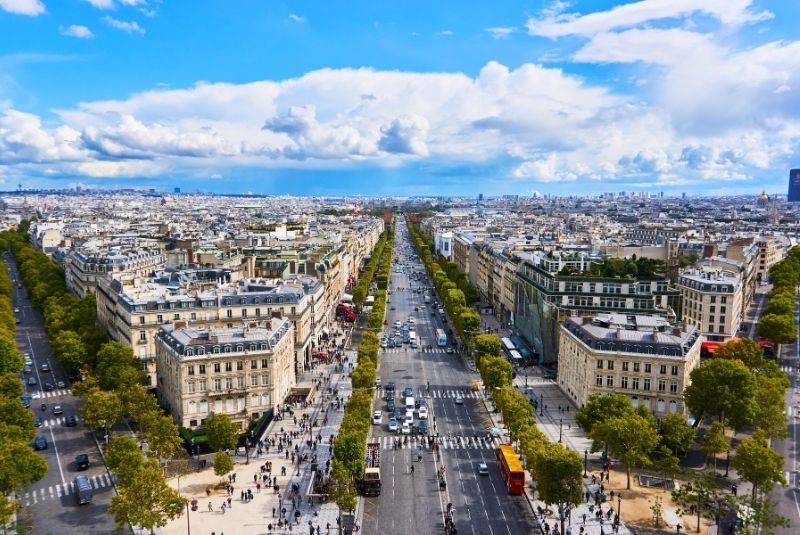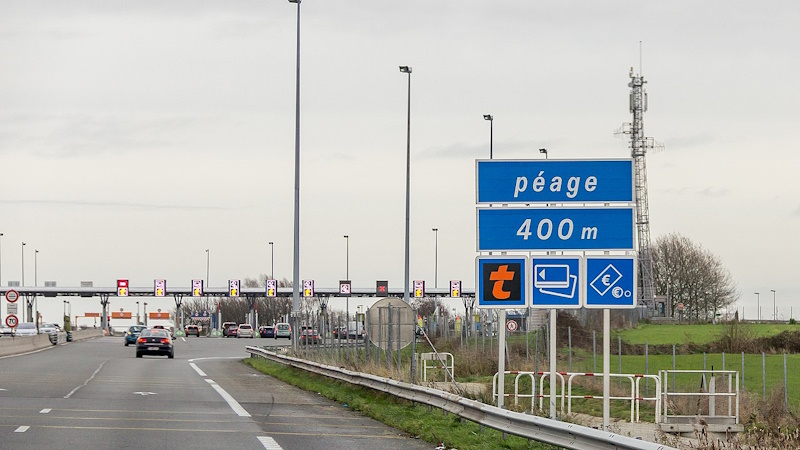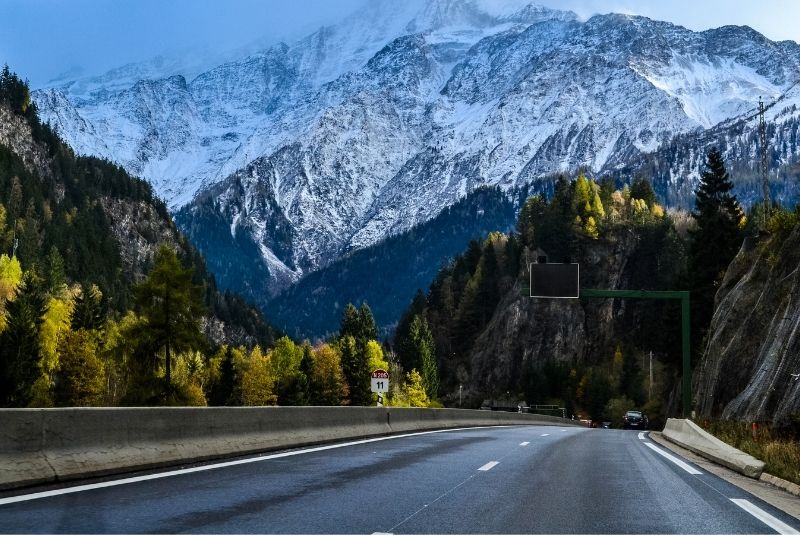20 Things to Know Before Driving in France as a Foreigner
Renting a car in France gives you access to beautiful countryside, coastal roads, and towns that trains don’t reach. But the rules and habits on the road can be unfamiliar if you’re not from Europe. This guide breaks down everything you need to know before getting behind the wheel.
Speed, Cameras, and Fines
1. Speeding is heavily enforced
France has over 4,000 speed cameras, including fixed and mobile ones. They’re not just on highways, many are tucked into town entrances, roadside boxes, or poles near speed drops. It’s easy to collect dozens of tickets without realizing it.
Some travelers have returned home to find dozens of fines in the mail. Even going just 1 km/h over can trigger a ticket. There’s usually a small tolerance (about 5 km/h), but relying on it is risky. Use cruise control wherever possible.
2. Understand the speed limits by road type
If there’s no posted sign, here’s what to go by:
In towns, the default is 50 km/h. That drops to 30 in many centers or near schools, and it applies across the whole town if you see a 30 sign paired with the town entrance sign.
Outside of towns, it’s 80 km/h by default, sometimes 90 depending on the department.
On motorways (autoroutes), the limit is 130 km/h, but it can drop to 110, 90, or even 80 near cities or during roadworks.
Only roads with blue signs are autoroutes. Dual carriageways with green or white signs follow different limits.
Always slow down for work zones. There are often cameras enforcing reduced speeds.
3. Don’t trust GPS blindly
Apps like Waze and Google Maps don’t always reflect recent speed changes. If a posted sign contradicts your app, trust the sign. This is especially true for new construction zones or town-wide 30 km/h policies.
In general though, Waze is a lifesaver, it gives real-time speed alerts and warns about cameras and police ahead.
Rules of the Road

4. You must yield to traffic from the right
The “priorité à droite” rule gives the right-of-way to any vehicle approaching from your right, unless there’s a stop or yield sign, or a solid white line before the junction.
This rule applies even if you’re on a larger road and the other car is coming from a small side street. Some intersections still work like this, especially in towns. It causes a lot of near-accidents because many tourists don’t expect it.
If the street to your right doesn’t have any road markings or signage, assume they have priority.
5. Roundabout rules aren’t always intuitive
In multi-lane roundabouts, the outside lane has priority. If you’re on the inside and trying to exit, you must yield to cars on the outer lane. Many locals stick to the outer lane the entire time and exit from there – it’s not elegant, but it works.
Some roundabouts, especially in older towns, still follow outdated rules where entering traffic has priority. This can be confusing – watch closely for yield signs.
6. Watch for merging traffic
In France, merging lanes (especially on older roads and some urban highways) often have priority. This differs from places like the U.S. where incoming cars yield.
You might see a “priorité à droite” sign, but in many cases, the merging lane has the right-of-way even without one.
7. Don’t hog the left lane
The left lanes on motorways are for overtaking. Once you’ve passed someone, return to the right. Lane-hogging is widely disliked and can cause frustration among local drivers.
Spanish drivers are sometimes teased for camping in the left lane. Don’t follow their example.
8. Some people use indicators while overtaking
It’s common to see drivers keeping their blinker on while passing cars on the autoroute. This is a leftover habit from when drivers were technically allowed to exceed the speed limit to complete an overtake.
The rule no longer exists, but the behavior remains. It’s also used by some drivers to signal they’ll be in the fast lane for a while.
Tolls and Road Types

9. Motorway tolls are expensive
Autoroutes in France charge tolls, and they add up quickly. Use this route planner to check options or find cheaper alternatives.
At exits, head to booths marked for cash or cards – avoid those labeled Télépéage (for electronic passes). Tapping a card works in most places. No need for coins or special passes unless you plan to drive extensively – then a Télépéage badge might be worth considering.
10. Flux libre toll zones
Some areas now use “flux libre” tolling, which means there’s no booth. Cameras record your plate, and you must pay online within 72 hours or at a machine near the end of the stretch.
11. French roads are generally in good condition
Despite some quirks and signage oddities, travelers often report that French roads are clean, smooth, and well-marked. Rest stops are frequent and pleasant. Tolls are the tradeoff.
Licensing and Legal Requirements
12. Bring the right license
Foreigners driving in France need either an International Driving Permit (IDP) or a certified French translation of their home country license.
Some rental agencies don’t check this, but French police might. One traveler was stopped near Reims and avoided trouble only because they had a certified translation. Without it, the officer would not accept their California license.
You can get an IDP from AAA or the American Automobile Touring Alliance. AATA is faster if you’re already abroad – delivery in about 3 days compared to 5+ weeks for AAA.
13. Get full insurance coverage
If you’re renting, opt for full insurance with zero deductible. Traffic rules can be unfamiliar, and accidents do happen. One person shared that a misunderstanding about right-hand priority led to a fender-bender that cost hundreds in repairs.
Vehicle and City Compliance
14. Get the right emissions sticker
If you’re entering French cities, your car might need a Crit’Air sticker. These are based on vehicle emissions and can be required in low-emission zones. This is especially relevant if you’re coming from another country.
Check before driving into Paris, Lyon, Grenoble, or other major cities. Police can fine you if your vehicle isn’t compliant.
Even cities that didn’t enforce low-emission zones in the past are starting to require Crit’Air stickers. If you’re planning to drive into urban areas during peak pollution periods, check the requirements.
15. You need safety equipment in the car
By law, every car must carry a high-visibility vest for each person, stored within reach of their seat, and a warning triangle (often required but not always enforced).
If you’re renting, ask the agency if these are provided.
Navigation, Parking, and Stops
16. Road signs may be only in French
Road signs are usually only in French. Basic knowledge helps, but Google Maps or Waze can guide you if you’re unsure.
Note that signs aren’t always complete. For example, town names at entrances imply a 50 km/h limit even if there’s no speed sign.
17. Parking can be tricky in small towns
In historic villages and countryside towns, parking can be extremely limited. Research options before arrival as not all places have free public lots, and on-street parking may require discs or payment apps.
18. Rest stops are well maintained
French autoroutes have frequent and well-equipped rest areas (“aires”). Most have free toilets, food options, and picnic areas. You don’t need coins to use bathrooms like in some other countries.
19. Speed bump signs look odd
The symbol for speed bumps looks like a little mustache. These often appear with rapid speed limit drops near towns.
Be extra alert in these zones – locals say they’re designed to catch you off guard.
20. Make sure Waze is set to km/h
Waze and other navigation apps may default to mph depending on your phone settings. Before your trip, switch it to kilometers to avoid misjudging speeds.
Bonus Tip: Always Greet People
This isn’t a driving rule, but it matters at gas stations, shops, or roadside stops. In France, it’s polite to begin any interaction with “Bonjour” before asking a question.
Asking “Excuse me, where’s the restroom?” without greeting first is seen as rude, even if you’re being polite otherwise.

